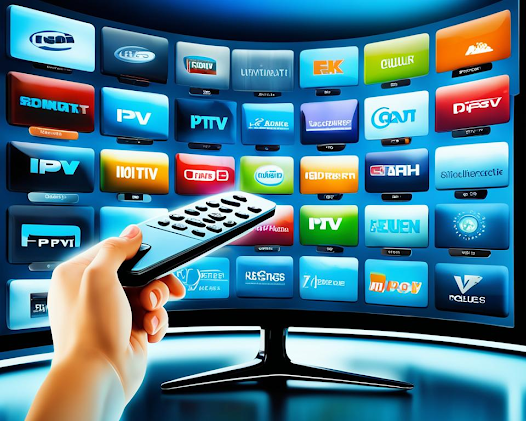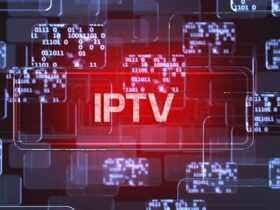
In the fast-evolving world of digital media, IPTV (Internet Protocol Television) has emerged as a cornerstone technology, revolutionizing how television content is delivered and consumed. This blog post aims to provide a comprehensive overview of IPTV technology, focusing on its key components: protocols, encoding methods, and streaming standards. By understanding these elements, we can grasp the intricacies behind IPTV’s seamless delivery of high-quality video and audio content over internet networks.
Click here for the best experience of IPTV services:
IPTV leverages internet protocols to transmit television content over IP networks, distinguishing it from traditional broadcasting methods like cable or satellite. This approach enables more flexible and interactive viewing experiences, tailored to modern consumer preferences for on-demand and personalized content delivery.
1. Protocols
Protocols are essential for the transmission of data packets across networks. In IPTV, several protocols play crucial roles:
Internet Protocol (IP):
Fundamental to IPTV, IP facilitates the routing of data packets between devices connected to the internet. It ensures that video, audio, and other multimedia content can be efficiently transmitted from content providers (servers) to end-users (viewers).
Transmission Control Protocol (TCP) and User Datagram Protocol (UDP):
TCP ensures reliable data delivery by establishing a connection between sender and receiver, verifying data integrity through acknowledgment mechanisms. UDP, on the other hand, is used for real-time streaming where speed and efficiency are prioritized over reliability, making it ideal for live broadcasts and interactive content.
Real-time Transport Protocol (RTP) and Real-time Control Protocol (RTCP):RTP is employed to transport audio and video streams over IP networks, while RTCP monitors transmission quality and provides feedback to optimize streaming performance. Together, RTP and RTCP ensure smooth playback and synchronization of multimedia content.

2. Encoding and Compression
Encoding transforms raw video and audio data into digital formats suitable for transmission over IP networks, while compression reduces file sizes to conserve bandwidth without compromising quality. Key encoding standards in IPTV include:
H.264 (Advanced Video Coding, AVC):
Widely adopted for IPTV, H.264 achieves efficient compression by analyzing and encoding video frames based on spatial and temporal redundancies. It supports HD (High Definition) and SD (Standard Definition) resolutions, making it versatile for various content delivery scenarios.
H.265 (High Efficiency Video Coding, HEVC):
A successor to H.264, HEVC offers superior compression efficiency, enabling higher quality video streams at lower bitrates. HEVC is pivotal for delivering Ultra HD (4K) content and HDR (High Dynamic Range) videos over bandwidth-constrained networks.

3. Streaming Standards
Streaming standards govern the transmission and reception of multimedia content, ensuring compatibility and optimal performance across devices and platforms. Key streaming standards utilized in IPTV include:
HTTP Live Streaming (HLS):
Developed by Apple, HLS segments video streams into smaller files served via HTTP. It adapts to varying network conditions by dynamically adjusting bitrate and resolution, ensuring uninterrupted playback on diverse devices, including smartphones, tablets, and smart TVs.
Dynamic Adaptive Streaming over HTTP (DASH):
A standardized approach for adaptive bitrate streaming, DASH segments content into multiple bitrate variants, allowing clients to request and switch between streams based on network bandwidth and device capabilities. DASH enhances user experience by delivering seamless playback without buffering interruptions.
Importance and Benefits of IPTV Technology
Understanding IPTV technology’s intricacies underscores its significance for consumers and content providers alike:
Enhanced Viewing Experience:
IPTV offers viewers high-quality, on-demand access to a vast array of content, including live broadcasts, movies, and TV shows, tailored to individual preferences and viewing habits.
Flexibility and Accessibility:
Consumers can enjoy IPTV services on multiple devices, from large-screen TVs to portable smartphones, transcending geographical constraints and enhancing convenience.
Cost-effectiveness:
IPTV’s efficient use of bandwidth and scalable infrastructure reduces operational costs for content providers, translating into competitive pricing and value for consumers.

For the best prices visit this website:
Personalization:
Advanced IPTV platforms leverage user data and preferences to deliver personalized recommendations and interactive features, enhancing engagement and satisfaction.
Conclusion
IPTV technology continues to redefine the television viewing experience by leveraging internet protocols, sophisticated encoding techniques, and adaptive streaming standards. By delivering high-quality content with flexibility and interactivity, IPTV meets the evolving demands of modern consumers for seamless, personalized entertainment options.
As IPTV technology evolves further, innovations in compression, streaming protocols, and user interfaces will continue to shape the future of digital media consumption. Embracing these advancements ensures that IPTV remains at the forefront of delivering engaging, immersive content experiences to audiences worldwide.
For the best experience of IPTV click here:
In conclusion, IPTV represents not just a technological advancement in broadcasting but a paradigm shift in how we access and enjoy multimedia content in the digital age.










Leave a Reply